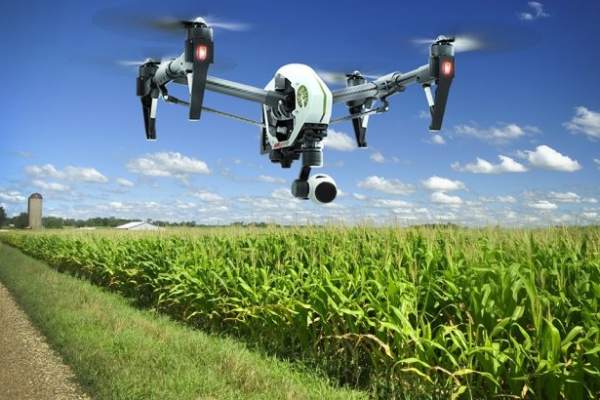Published on the 14/06/2018 | Written by Newsdesk

Get ready to connect that fridge – and factory and farm – to the internet, because the IoT revolution is here…
New data from Juniper Research predicts that the total number of connected IoT (Internet of Things) sensors and devices is set to leap 140 percent from its current 21 billion to more than 50 billion in the next four years.
Specifically, the research The Internet of Things: Consumer, Industrial & Public Services 2018-2023, finds that this growth will be driven by “edge” computing services (the processing of data away from the cloud and closer to the source – such as Microsoft’s recently announced Project Natick); increasing both deployment scalability and security.
“Edge computing introduces the notion of returning to a distributed model of data processing,” says the report.
“Where cloud computing relies on a limited number of centralised service providers, the addition of processing power between an MCU or other device within the network can reduce reliance on data processing in the cloud, as well as distribute it to any number of so-called edge devices.”
“This has the effect of: Reducing latency, owing to the fact that a round trip to and from the cloud is no longer required; Reducing bandwidth, as some data now does not need to be transmitted over the Internet; Increases reliability in the sense that loss of Internet connectivity will not disrupt service provision to the same extent; Potentially offers increased protection against cyberattacks and privacy breaches as some data is no longer sent to the cloud.”
“It’s well understood that IoT solutions can create operational efficiencies, but we know the true impact extends well beyond that into our daily lives.”
The growth is the result, in part, of increased investment from large scale vendors – namely IBM, Microsoft, Intel, Bosch and Nokia.
The research says that “IBM’s breadth of services and investment in its Watson platform has paid off. However, Microsoft’s tremendous growth in the enterprise cloud space, its IoT Edge services and AI prowess highlight an increasingly compelling offer in the market”.
The numbers back up Juniper’s research: Microsoft has announced that it will invest US$5 billion into IoT over the next four years.
“The reason we are doing this is simple,” says Microsoft Azure CVP Julia White in a blog post announcing the news.
“Our goal is to give every customer the ability to transform their businesses, and the world at large, with connected solutions.”
“It’s well understood that IoT solutions can create operational efficiencies, but we know the true impact extends well beyond that into our daily lives. Our customers are delivering electricity to schools in Africa, creating better patient outcomes with predictive care, improving worker safety on job sites and driver safety on Alaskan roadways.”
And expect that investment to have an impact on this side of the globe and on both sides of the Tasman. The NZ IoT Alliance says that this tech’s development will mean an acceleration of the economic benefits that come with integrating IoT into the supply chain both here and abroad.
“From logistics to transport to agriculture to tourism to packaging to products to manufacturing, granular data collection gives us a richer data set and helps with forecast models and planning,” NZ IoT Alliance executive director Kriv Naicker says.
“Data analytics and insight drive value in terms of the huge amounts of data that IoT will pump through. Predictive analytics and augmentation of insights will continue to see that being built on with AI, machine learning, deep learning, etc. Further value from IoT investment comes with the other exponential technologies that are hitting the market – blockchain, block computing, edge computing, AR/VR, drones.”
Juniper predicts that a substantial proportion of the estimated 46 billion industrial and enterprise devices connected in 2023 will rely on edge computing. It’s therefore crucial, the research company says, to address key challenges surrounding standardisation and deployment models of the platform.
“IoT at the edge dramatically increases project scope and value,” says research author Steffen Sorrell. “However, it must be noted that work around standardisation, interoperability and how to manage the decentralisation of data processing remain in development”.
In Australia, retail giant Woolworths has quietly been pursuing an ambitious ‘farm-to-fork’ supply chain tracking project – one of the largest of its kind in the country – and codenamed ‘Fresh Insights’.
The company says that, when underway,the project will allow the company to track just how much sunlight and water crops are receiving, when produce is being transported, and even how smoothly the produce is handled in transit.
Such systems will require innovation in the area of blockchain technology, says Juniper.
“Consortium-run blockchains or similar distributed ledger technologies, such as IOTA [Internet of Things Application], will play an important role in delivering future IoT events or payment transaction management.”
“However, both approaches presently lack true decentralisation offered by public blockchains, a key requirement for end-to-end trust. Juniper claimed that opportunities for blockchain technologies in the IoT would remain limited until such issues were resolved.”
Click here to download the whitepaper IoT: The Internet of Transformation 2018.



























